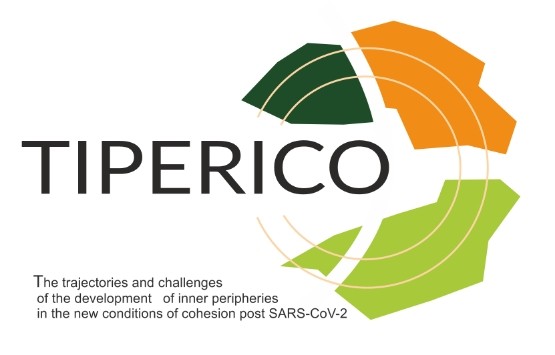AChurski P., Adamiak C., Dubownik A., Pietrzykowski M., Szyda B., 2024. WHAT DOESN'T WORK IN EUROPEAN COHESION POLICY? DEVELOPMENT CHALLENGES OF THE INENER PERIPHERY AFTER THE COVID-19 PANDEMIC. 03/2014 - Working Paper of TIPERICO Project. Faculty of Human Geography and Planning, Adam Mickiewicz University Poznań.
ABSTRACT: The EU's cohesion policy is a fundamental component of intervention policies in united Europe. Its primary goal is to reduce the scale of spatial differences in development by striving to improve economic, social, and territorial cohesion. The outcomes of the actions implemented to date have been unsatisfactory. This underperformance is the basis for the ongoing discussion in Europe about the future paradigm of cohesion policy post-2027. This article systematizes the challenges and proposes recommendations concerning the actions of EU cohesion policy that should be considered in the new paradigm of this public intervention, enhancing its effectiveness and efficiency during a period of strong pressure from external developmental shocks, especially in less-developed areas such as inner peripheries. Its unique value is constructed from two fundamental factors. Firstly, the presented results are the outcome of qualitative field research, providing unique empirically factual material. Secondly, they concern the processes occurring in relation to the territories of the member state that is the largest beneficiary of EU cohesion policy, Poland, which is often regarded as a specific laboratory for cohesion policy.
KEYWORDS: Cohesion Policy, inner peripheries, European Union, Poland
HIGHLIGHTS:
- Limited Impact of Current Cohesion Policy: Despite decades of effort, EU Cohesion Policy has not effectively reduced regional disparities, particularly within the "inner peripheries," which remain economically stagnant and disconnected from growth centers.
- Major Challenges in Inner Peripheries: These areas face poor connectivity, low economic activity, demographic decline, and limited access to services, worsened by the COVID-19 pandemic and geopolitical tensions like the war in Ukraine.
- Recommendations for Policy Improvement: Key suggestions include enhancing local and regional cooperation, improving public transport and digital infrastructure, and supporting energy transformation efforts in less-developed areas.
- Advocacy for a Place-Based Approach: The document emphasizes tailoring EU Cohesion Policy to the specific needs of different regions, particularly inner peripheries, to achieve more effective outcomes.



